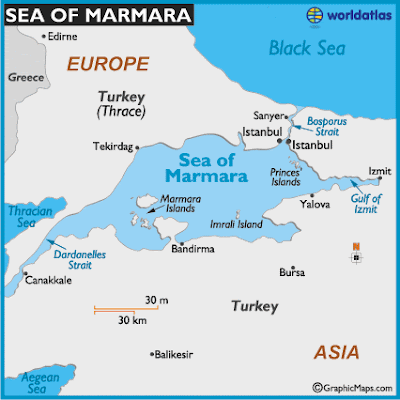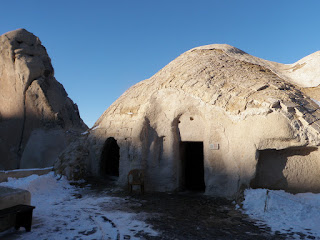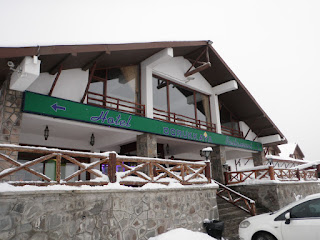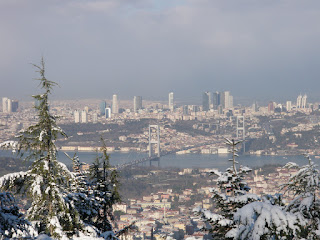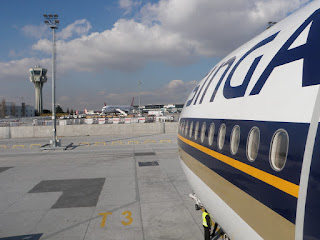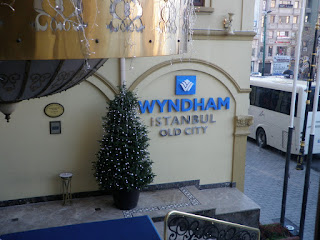Flying to Istanbul, Land of the Ottoman . . . where our Mediterranean adventure begins.
________________________________________________________________________________
Day 1 and Day 2:
Istanbul:Roman Valens Aqueduct:
a Roman aqueduct which was the major water-providing system of the Eastern Roman capital of Constantinople (modern Istanbul, Turkey). Completed by Roman Emperor Valens in the late 4th century AD, it was maintained and used by the Byzantines and later the Ottomans, and remains one of the most important landmarks of the city.
The bridge section of the Aqueduct of Valens had a length of 971 metres (3,186 ft) and a maximum height of about 29 metres (63 metres above sea level) with a constant slope of 1:1000. Arches 1–40 and 46–51 belong to the time of Valens, arches 41–45 to Mustafa II, and those between 52 and 56 to Suleyman I. Arches 18–73 have a double order, the others a single order.
Hippodrome of Constantinople:
an open-air museum, the venue of ancient Roman chariot races:
a circus that was the sporting and social centre of Constantinople, capital of the Byzantine Empire. Today it is a square named Sultan Ahmet Square in the Turkish city of Istanbul, with a few fragments of the original structure surviving.
The word hippodrome comes from the Greek hippos, horse, and dromos, path or way. For this reason, it is sometimes also called Atmeydanı ("Horse Square") in Turkish. Horse racing and chariot racing were popular pastimes in the ancient world and hippodromes were common features of Greek cities in the Hellenistic, Roman and Byzantine eras.Hippodrome monuments:
Serpent Column:
To raise the image of his new capital, Constantine and his successors, especially Theodosius the Great, brought works of art from all over the empire to adorn it. The monuments were set up in the middle of the Hippodrome, the spina. Among these was the Tripod of Plataea, now known as the Serpent Column, cast to celebrate the victory of the Greeks over the Persians during the Persian Wars in the 5th century BC. Constantine ordered the Tripod to be moved from the Temple of Apollo at Delphi, and set in middle of the Hippodrome. The top was adorned with a golden bowl supported by three serpent heads, although it appears that this was never brought to Constantinople. The serpent heads and top third of the column were destroyed in 1700. Parts of the heads were recovered and are displayed at the Istanbul Archaeology Museum. All that remains of the Delphi Tripod today is the base, known as the "Serpentine Column".
Obelisk of Thutmose III:
Another emperor to adorn the Hippodrome was Theodosius the Great, who in 390 brought an obelisk from Egypt and erected it inside the racing track. Carved from pink granite, it was originally erected at the Temple of Karnak in Luxor during the reign of Thutmose III in about 1490 BC. Theodosius had the obelisk cut into three pieces and brought to Constantinople. The top section survives, and it stands today where Theodosius placed it, on a marble pedestal. The obelisk has survived nearly 3,500 years in astonishingly good condition.
Walled Obelisk:
In the 10th century the Emperor Constantine Porphyrogenitus built another obelisk at the other end of the Hippodrome. It was originally covered with gilded bronze plaques, but they were sacked by Latin troops in the Fourth Crusade. The stone core of this monument also survives, known as the Walled Obelisk.
The Serpent Column (front) with the Obelisk of Thutmose III (back)
The Walled Obelisk in the hippodrome.
Blue Mosque:
(Sultanamet, Sultanamet Mah, Istanbul 34122, Turkey)
The Sultan Ahmet Mosque was constructed between 1609 and 1616 during the rule of Ahmed I.
St. Sophia Museum (Hagia Sophia):
(Ayasofya Square, Sultanahmet, Istanbul, Turkey)
a UNESCO World Heritage Site, at one time a cathedral and subsequently a Mosque.
a Greek Orthodox Christian patriarchal basilica (church), later an imperial mosque, and now a museum (Ayasofya Müzesi). From the date of its construction in 537 AD, and until 1453, it served as an Eastern Orthodox cathedral and seat of the Patriarch of Constantinople, except between 1204 and 1261, when it was converted by the Fourth Crusaders to a Catholic cathedral under the Latin Empire. The building was later converted into an Ottoman mosque from 29 May 1453 until 1931. It was then secularized and opened as a museum on 1 February 1935.
Famous in particular for its massive dome, it is considered the epitome of Byzantine architecture and is said to have "changed the history of architecture". It remained the world's largest cathedral for nearly a thousand years, until Seville Cathedral, in Spain, was completed in 1520.The current building was originally constructed as a church between 532 and 537 on the orders of the Byzantine Emperor Justinian I and was the third Church of the Holy Wisdom to occupy the site, the previous two having both been destroyed by rioters.
The church was dedicated to the Wisdom of God, the Logos, the second person of the Trinity, its patronal feast taking place on 25 December, the commemoration of the birth of the incarnation of the Logos in Christ. Although sometimes referred to as Sancta Sophia (as though it were named after Sophia the Martyr), sophia being the phonetic spelling in Latin of the Greek word for wisdom, its full name in Greek is Hagias tou Theou Sophias, "Shrine of the Holy Wisdom of God".
Topkapi Palace:
a walled city perched above the Bosphorus and Golden Horn.
It was one of the major residences of the Ottoman sultans for almost 400 years (1465–1856) of their 624-year reign.
As well as a royal residence, the palace was a setting for state occasions and royal entertainments. It is now a museum and as such a major tourist attraction. It also contains important relics of the Muslim world, including Muhammed's cloak and sword. The Topkapı Palace is among the monuments contained within the "Historic Areas of Istanbul", which became a UNESCO World Heritage Site in 1985, and is described under UNESCO's criterion iv as "the best example[s] of ensembles of palaces [...] of the Ottoman period."Historic Areas of Istanbul - UNESCO World Heritage Sites since 1985:
With its strategic location on the Bosphorus peninsula between the Balkans and Anatolia, the Black Sea and the Mediterranean, Istanbul has been associated with major political, religious and artistic events for more than 2,000 years. Its masterpieces include the ancient Hippodrome of Constantine, the 6th-century Hagia Sophia and the 16th-century Süleymaniye Mosque.
Riding a ferry on sea of Marmara to Canakkale:
Canakkale:
Wooden Trojan Horse:
_________________________________________________________________________________
Day 3:Pergamon:
Ruins of Asklepion:
(No:1 Bergama Merkez, Bergama, Turkey)
one of the most famous shrines and therapeutic centres in the ancient world.
A UNESCO World Heritage site since 2014:
Asklepion is an ancient healing complex located at the base of the Pergamon acropolis in Turkey built in honour of Asklepios, god of healing. The Asklepion was a term used in ancient Greece to define a type of temple, devoted to the god Asklepios, which acted as a healing centre.
The site in Pergamon was founded in the 4 th Century BC around a sacred spring that still flows. Over the next centuries, it became one of the best-known healing centres of the ancient world, second in importance only to Epidaurus in Greece and was also the world's first psychiatric hospital. The influential physician Galen was born in Pergamon and practiced here in the 2 nd Century AD, having first made his medical reputation treating warriors in the gladiatorial games of the city. Many of the treatments employed at Pergamon, which were in complement with a sacred source of water that was later discovered as having radioactive properties, have been used for centuries and are still believed to cure all illnesses. Its sacred springs were once visited by such luminaries as the Roman emperor and philosopher Marcus Aurelius, as well as countless ordinary people seeking cures for their physical and mental ailments.
Ephesus:
(Selcuk 35920, Turkey)
- a UNESCO World Heritage Site since 2015.
Outdoor archeological museum at Selcuk:
- where many of the excavated artifacts of Ephesus are on display.
Arcadian Way:
This street is situated between the Harbour Baths and the great theatre. Entering from the port, traders and sailors would first arrive in this street. So it was designed gorgeous with marbel slabs and colonnades. It was constructed in the Hellenistic Period, but then was restored during the reign of the Emperor Arcadius (395-408 AD.), from whom it takes its present name. The street was 530 meters long and 11 meters wide, and on both sides of the street there were shops and galleries, and gates in the form of monumental arches. There were four higher columns with the statues of four apostels on the top.
It was one of the three lighted street at that time along with Rome and Antioch.50 streetlights lit up its colonnades and water, sewerage channels ran beneath the marble flagstones.
The first building near the theatre is called the Theatre Gymnasium.It is a Second Century AD building with two floors and numerous rooms.It was used for sports ground.
At the entrance of the port there were the Port Baths or the Harbour Baths.They were built in the year 2 AD.The Baths are also called the Baths of Constantine, for they were restored by Constantine II (337-361). It was one of the largest building with 160 m wide, 170 m long and 28 m high.
Library of Celsus:
This library is one of the most beautiful structures in Ephesus. It was built in 117 A.D. It was a monumental tomb for Gaius Julius Celsus Polemaeanus, the governor of the province of Asia; from his son Galius Julius Aquila. The grave of Celsus was beneath the ground floor, across the entrance and there was a statue of Athena over it. Because Athena was the goddess of the wisdom.
The scrolls of the manuscripts were kept in cupboards in niches on the walls. There were double walls behind the bookcases to prevent the them from the extremes of temperature and humidity. The capacity of the library was more than 12,000 scrolls. It was the third richest library in ancient times after the Alexandra and Pergamum. The facade of the library has two-stories, with Corinthian style columns on the ground floor and three entrances to the building. There is three windows openings in the upper story. They used an optical trick that the columns at the sides of the facade are shorter than those at the center, giving the illusion of the building being greater in size.
The statues in the niches of the columns today are the copies of the originals. The statues symbolize wisdom (Sophia), knowledge (Episteme), intelligence (Ennoia) and valor (Arete). These are the virtues of Celsus. The library was restored with the aid of the Austrian Archaeological Institute and the originals of the statues were taken to Ephesus Museum in Vienna in 1910.
There was an auditorium ,which was for lectures or presentations between the library and the Marble Road, was built during the reign of the Emperor Hadrian.
Amphitheatre:
This is the most magnificent structure in Ephesus ancient city. The Great Theatre is located on the slope of Panayir Hill, opposite the Harbor Street, and easily seen when entering from the south entrance to Ephesus. It was first constructed in the Hellenistic Period, in the third century BC during the reign of Lysimachos, but then during the Roman Period, it was enlarged and formed its current style that is seen today.It is the largest in Anatolia and has the capacity of 25,000 seats. The cavea has sixty six rows of seats, divided by two diazoma (walkway between seats) into three horizontal sections. There are three sections of seats. In the lower section, Marble pieces, used for restoration, and the Emperor's Box were found. The seats with backs ,made of marble, were reserved for important people. The audience entered from the upper cavea.
The stage building is three-storied and 18 meters high. The facade facing the audience was ornamented with relieves, columns with niches, windows and statues. There are five doors opening to the orchestra area, the middle one of which is wider than the rest. This enhanced the appearance of the stage, giving it a bigger, monumental look.
The theatre was used not only for concerts and plays, but also for religious, political and philosophical discussions and for gladiator and animal fights.
_____________________________________________________________________________
Day 4:
House of the Virgin Mary:
(Selcuk, Turkey)
- the final resting place of the mother of Christ.- it is spectacularly situated above the Ephesus Ruins.
Turkish Leather Factory Outlet
- a delightful fashion show that showcases the most trendy leather products such as jackets, wallets, handbags, belts, hats etc
Turkish Local Produce Shopto sample and purchase famous Turkish sweets, teas, olive oil, nuts.
Pamukkale:
Ruins of Ancient Hierapolis:
(Denizli, Turkey)
(Denizli, Turkey)
-a UNESCO World Heritage Site since 1988.
Deriving from springs in a cliff almost 200 m high overlooking the plain, calcite-laden waters have created at Pamukkale (Cotton Palace) an unreal landscape, made up of mineral forests, petrified waterfalls and a series of terraced basins. At the end of the 2nd century B.C. the dynasty of the Attalids, the kings of Pergamon, established the thermal spa of Hierapolis. The ruins of the baths, temples and other Greek monuments can be seen at the site.
Antique Pool (Cleopatra Pool)
Cotton Castle (Fairyland Terraces):
- glistening pools and cascades in scallop shell basins.
Every year “Cotton Castle” in Turkey attracts a million visitors, who are eager to see its spectacular stepped terraces and “frozen” waterfalls, or to find refreshment in its oyster-shaped mineral pools. Today the region is called Pamukkale (Turkish for “cotton castle”). But in New Testament times it was part of the thriving city of Hierapolis, famed for the healing qualities of its hot mineral springs. (In Revelations 3:15-16 Christ condemned the church at Laodicea for not being “hot” like the healing waters flowing down from nearby Hierapolis.)
This elaborate “white castle” sprawls more than a mile (8,860 feet, 2,700 m) across the hillside. Its blazing white stones really do look like a magical castle floating in the clouds. Evolutionary geologists say it formed slowly over tens of thousands of years, as chemicals in the water precipitated out.
These beautiful white pools in Turkey are not manmade but natural projects of mineral-rich water flowing down from hot springs. High rains and residual heat after the Flood allowed the white stone to form more rapidly than today.
How Did It Really Happen?
Pamukkale’s white terraces are made of travertine, a form of calcium carbonate commonly used as a decorative stone in buildings and homes. This travertine is deposited by mineral-rich water from hot springs. (Calcium carbonate is also the main component of eggshells, seashells, and the lime in fertilizer.) Seventeen hot-water springs are just upstream of the terraces. The water temperatures range from slightly warm (95°F, 35°C) to boiling (212°F, 100°C). Gushing from the springs, this hot water is full of dissolved calcium carbonate. It flows to the head of the terraces, which appear on a sloping cliff. There it starts depositing the calcium carbonate as it cascades into each terrace level, even leaving behind a few “frozen” waterfalls.
Underground volcanic activity generates the heat in the hot springs. The volcanic waters dissolve calcium carbonate as they pass through limestones. When the water reaches the surface, it is supersaturated with calcium carbonate. As the water then flows downstream, carbon dioxide escapes from it. The water deposits the calcium carbonate as a soft jelly, which eventually hardens into travertine.
Konya:
- the old capital of the Anatolian Seljuk Empire, now Turkey's most religious city.
Underground volcanic activity generates the heat in the hot springs. The volcanic waters dissolve calcium carbonate as they pass through limestones. When the water reaches the surface, it is supersaturated with calcium carbonate. As the water then flows downstream, carbon dioxide escapes from it. The water deposits the calcium carbonate as a soft jelly, which eventually hardens into travertine.
________________________________________________________________________________
Day 5:Konya:
- the old capital of the Anatolian Seljuk Empire, now Turkey's most religious city.
Mevlana Tekke:
(Konya, Turkey)
(Konya, Turkey)
- a museum and national monument which contains the tomb of the Founder of The Whirling Dervishes.
________________________________________________________________________________
Day 6:
Cappadocia:
Pigeon Valley:
(Uchisar KasabasI | Nevşehir Kapadokya, Goreme 50240, Turkey)
Pigeon Valley is situated between Göreme and Uçhisar and is ideal for walking, as the trek is relatively easy. The name comes from the thousands of pigeon houses that have been carved into the soft tuff since ancient times. Although they can be found throughout Cappadocia, they are especially numerous in this valley. They were carved wherever space allowed, including abandoned cave houses and churches. In Cappadocia, pigeons have long been a source of food and fertilizer. The advent of chemical fertilizers has reduced the use of pigeon dung. However, some farmers still maintain their lofts because they insist that the reputation of Cappadocian fruits as the sweetest and most succulent in Turkey is entirely due to pigeon dung.
Hot Air Balloon ride over the Pigeon Valley:
(Cumhuriyet Mahallesi Kapadokya Caddesi, No.76, Avanos 50500, Turkey)
Underground City:
-Cardak Underground City:
- once a place of refuge for 15,000 Christians.
- explore the ancient bedrooms, church, meeting hall and food storage rooms in this eight-storey city connected by 30km of corridors and passageways.
On the way to Goreme Open-air Museum:
(Muze Yolu, Goreme, Turkey)
- a UNESCO World Heritage Site with fascinating frescoed rock churches and chapels
The Goreme Open-Air Museum resembles a vast monastic complex composed of scores of refectory monasteries placed side-by-side, each with its own fantastic church. It is obviously the first sight to be visited by any traveler in Cappadocia, standing as it does in the very center of the region with easy access from all directions. It is only 15 minutes walk (1.5km, 1 mile) from Goreme village center. It contains the finest of the rock-cut churches, with beautiful frescoes (wall paintings) whose colors still retain all their original freshness. It also presents unique examples of rock hewn architecture and fresco technique. The Goreme Open Air Museum has been a member of UNESCO World Heritage List since 1984, and was one of the first two UNESCO sites in Turkey.
The area covered by this Open Air Museum forms a coherent geographical entity and represents historical unity. There are eleven refectories within the Museum, with rock-cut churches tables and benches. Each is associated with a church. Most of the churches in Goreme Open Air Museum belong to the 10th, 11th and 12th centuries.
Esentepe Hill:
- bird's eye view of Cappadocia, overlooking Goreme and Pigeon Valley.
Uchisar "Castle" Village:
- a fantasyland of strange and wonderful works of man and nature
Uchisar is situated at the highest point in Cappadocia, on the Nevsehir-Goreme road, just 5 km from Goreme. The top of the Uchisar Castle, provides a magnificent panorama of the surrounding area with Mount Erciyes in the distance.
Many rooms hollowed out into the rock are connected to each other with stairs, tunnels and passages. At the entrances of the rooms, there are millstone doors, just like the ones in the underground settlements, used to control access to these places. Due to the erosion in places of this multi-leveled castle, it is unfortunately not possible to reach all the rooms. Most of the rooms, located on the north side of the castle are in use as pigeon houses (dovecuts) today. Farmers used these cave pigeon houses to collect the droppings of pigeons which is an excellent natural fertilizer for the orchards and vineyards.
There are also many other pigeon houses in Pigeon Valley (Guvercinlik Vadisi in Turkish) which connects Uchisar to Goreme. Most of these cave dwellings have been painted white to attract the birds and their valuable droppings.
The fairy chimneys to the west, east and north of Uchisar were hollowed out and used as graves during the Roman period. Inside these rock cut tombs, the entrances which generally face west, are klines or stone slabs on which the bodies were laid.
Turkish Carpet Weaving Centre:
Pottery Village:
Kizilirmak (Red River):
the longest river completely within the borders of Turkey (1355 km). The Kızılırmak also known as the Halys River is the longest river in Turkey among the rivers which originates and ends in Turkey (both origin and mouth being in Turkey).
Kızılırmak river, the longest wholly within Turkey. It rises in the Kızıl Mountains in north-central Anatolia at an elevation of about 6,500 feet and flows southwest, past the towns of Zara and Sivas. It then turns northward in a great crescent-shaped bend, where it breaks through the Pontic Mountains and flows into the Black Sea between Sinop and Samsun after a total course of about 734 miles.The Hittites called it the Maraššantiya. It formed the western boundary of Hatti, the core land of the Hittite empire. In Classical Antiquity, it was the boundary between Asia Minor and the rest of Asia, and also the boundary between Pontos and Paphlagonia.
As the site of the Battle of Halys or Battle of the Eclipse on May 28, 585 BC, it was the border between Lydia to the west and Media to the east until Croesus of Lydia crossed it to attack Cyrus the Great in 547 BC. He was defeated and Persia expanded to the Aegean Sea.
Ancient Cave Theatre:
- The Whirling Dervishes and Turkish Belly Dancing Show.
Evranos Restaurant:(Orta Mah. No:88, Avanos, Turkey)
________________________________________________________________________________
Day 7:
Caravanserai:
- a 13th entury ancient hotel for travellers on the Silk Road.
Salt Lake (Lake Tuz):
(Sereflikochisar, Turkey)
Ankara:
Mausoleum of Ataturk:
(AnItkabir, AnIt Cad. Tandogan, Cankaya, Ankara 06520, Turkey)
- located on an imposing hill in the Anittpe quarter of the city
- it showcases the history of Mustafa Kemal Ataturk, "The Founding Father of Modern Turkey".
Bolu:
Abant Lake:
- peaceful and spectacular
- in the ski resort town of Bolu
Dorukkaya Ski Mountain Resort:
(Kartalkaya Mevkii, Bolu, Turkey)
___________________________________________________________________________
Day 8:
Istanbul:
Camlica Hill:
(Turistik Camlica Cd. Uskudar, Istanbul, Turkey)
- see a panoramic view of the southern part of Bosphorus and the mouth of the Golden Horn.
Cruise on the Bosphorus Strait:
Spice Bazaar (Egyptian Bazaar):
(Rustem Pasa Mahallesi 34116 Istanbul, Turkey
Grand Bazaar:
(Beyazit Gate, Istanbul. Turkey)
- houses more than 4,000 shops, teahouses and cafes.
- art crafts, lamps, clothes, jewelry, paintings, souvenirs, cooking utensils.
________________________________________________________________________________
Day 9 and Day 10:
Ataturk Airport:
Eat in Turkey:
Sultan Kosesi Restaurant and Cafe:
Kucukayasofya Caddesi | No:6 Sultanahmet, Istanbul 34122, Turkey (Sultanahmet)
Adana Kebap Set Lunch:
Kardesler Restaurant:
Ataturk Bulv. No:130 | Bergama Merkez, Bergama, Bergama, Turkey
Sofra Restaurant:
Isa Bey Street, Selcuk 35920, Turkey
Lokmahane Restaurant:
Aziziye Mah. Menguc Cad. No 49 | Karatay / Konya, Konya 42050, Turkey
soup of the day, etli ekmek:
(meaning "bread with meat", a pizza-like dish which originated in Konya)
chicken tava:
Bizim Ev Restaurant:
Orta Mah. BaklacI Sok. No 1, Avanos 50500, Turkey
- a cave restaurant
Testi Kebap:
(Pottery Kebab)
Ayranci Restaurant:
Dinek Mahallesi | Ankara Adana E-90 Karayolu 99. km, Konya, Turkey
chicken sac kebab:
Sur Balik Restaurant:
Cankurtaran, Istanbul, Turkey
chicken sis:
Sirena Restaurant:
Yeni Galata Koprusu Alti, Eminonu Halic, Tarafi, EH No. 1, Istanbul, Turkey
Stay in Turkey:
Le Bleu Kusadasi:
Kadinlar Denizi Mevkii Haci Feyzullah Mah 17 Sok No 4, Kusadasi 09400, Turkey
Pam Thermal Hotel, Pamukkale:
Karahayit Mah. Pamukkale Denizli, Karahayit, Turkey
Uchisar Kaya Hotel:
Adnan Menderes Street. No 15 | Nevsehir, Uchisar 50240, Turkey
Soylu Hotel Bolu:
Beskavaklar Mh. D100 Karayolu Uzeri NO:61, Bolu 14100 , Turkey
Wyndham Istanbul Old City Hotel:
Fethi Bey Cad, Laleli-Fatih, Istanbul 34134, Turkey








